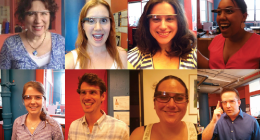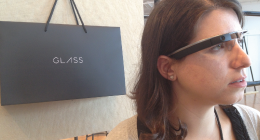Active Design: Architect's Strategy for Making Cities Healthier to Navigate
October 7, 2015
By Sonya Bentovich, Senior Associate, Research & Consulting

Throughout most days, urban commuters make thousands of seemingly instinctive decisions – decisions about which streets to take on the way to the office, which door to open, or even whether or not to take the stairs. It turns out that these choices aren’t as robotic as they seem. In fact, public health officials have teamed with architects and urban planners to design buildings and cities that subconsciously nudge residents to make healthier choices.
This collaboration, dubbed “active design,” has ramped up in response to the country’s rising rates of obesity and chronic disease, which are linked to sedentary lifestyles. The Center for Disease Control and Prevention lists that over one third of US adults and one sixth of US children are currently suffering from obesity. With this in mind, architects and planners are thinking beyond visual appeal and more about how space can offer opportunities for exercise within daily routines and implicitly encourage these choices.
In 2010, the NYC Department of Design and Construction released Active Design Guidelines, a manual filled with best practices based on case studies and academicresearch and over the past 5 years these practices have been brought to life across cities.
While some of the principles within the manual seem to be no more than common sense, (such as that a sidewalk will boost more pedestrian traffic and that well-lit spaces create safety) there are some not-so-intuitive psychological principles that are put into play to increase the likelihood that residents will go for the healthier option. For example, when designing a walkable streetscape, the Active Design Guidelines discuss the impact of a space having a quality that makes it “distinct, recognizable, and memorable.” Additionally, “size, texture, and articulation of physical elements that match the size and proportions of humans and, equally important, correspond to the speed at which humans walk” and “the degree to which people can see or perceive objects and activity – especially human activity – beyond the edge of a street.”
Some examples that you may notice as you navigate through your city are:
 7 active design examples in cities. Sources: http://www1.nyc.gov/site/ddc/about/active-design.page, and http://centerforactivedesign.org/stairprompt
7 active design examples in cities. Sources: http://www1.nyc.gov/site/ddc/about/active-design.page, and http://centerforactivedesign.org/stairprompt
Instead of directing people to go to the gym, architects are integrating the gym into the city. For example, take Via Verde, a residential complex in NYC’s South Bronx.
 Source: http://viaverdenyc.com/
Source: http://viaverdenyc.com/Co-developed by Jonathan Rose Companies and Phipps Houses, this project has been recognized as a model for active design, as it is developed around a dynamic garden. It features open-air courtyards, bike storage spaces and of course, prominent stairs! These elements encourage physical activity and create a sense of community – simultaneously making people happier and lowering health care costs.
While active design may not singlehandedly solve our country’s health crisis, it’s a progressive preventative measure and makes it easier to make healthier choices in the cities we inhabit. Next time you spontaneously decide to venture down a new street, take note of whether there is an inanimate object guiding you there and how this may impact your physical, mental or social health.
Have you noticed any examples of “active design” throughout your daily routine? How have they impacted you?
Designs By Lisa Vissichelli, Digital Designer
Edited By Gina Gioldassis, Operations & Communications Coordinator
Social Media by Janine Walsh, Operations & Community Manager














